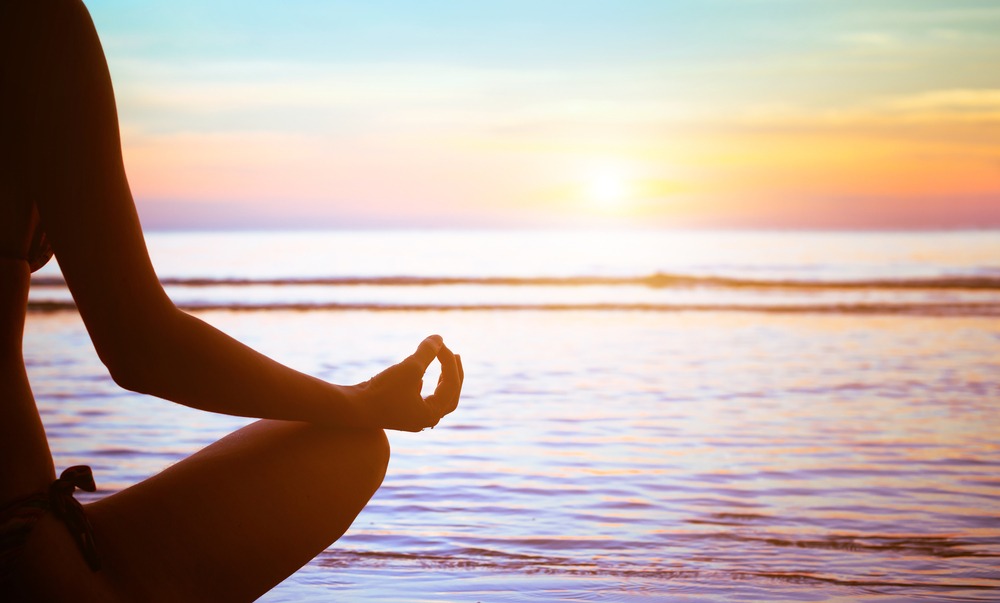We are now in a monumental time of change on our planet, and I’m so grateful to know that we are all in this together. At this stage in my life, I am resolutely settled into my purpose as expressed in my life work. I am devoted to supporting you in creating well being in all areas of your life. I am so honored you are here, and I look forward to co-creating even more blessings together.
If your experience of late has been anything like mine, you might have noticed yourself feeling a little more concerned about the state of the world. We live in challenging times, with political upheaval, economic uncertainty, infrastructure collapse, civil and social justice discord, and environmental distress. And as the pace of change increases toward an uncertain future, many of us succumb to the overwhelm of fear, stress, and anxiety. I know for myself, there are mornings when glancing at the news feed makes me feel like crawling back under the covers. But this is our clarion call for TRANSFORMATION.
As Harriet Tubman suggested,
“If you are tired, keep going; if you are scared, keep going; if you are hungry, keep going; if you want to taste freedom, keep going.”
We must find the strength within to somehow, just keep going. One step, one breath at a time, one after another.
Last month I spoke to a group of industry leaders and facilitated a leadership visioning process for a leadership team based in the U.S. and Canada. The topic was “Finding the Calm Within the Chaos.”
There is a Backstory
For years, I experienced a frequent wrestling match with my mind. It was exhausting. My mind spent endless hours thinking, ruminating, concocting storylines and “what if” scenarios. Sound familiar?
Endlessly streaming thoughts created anxiety, depression and stuckness. Oddly, this relentless thinking machine often failed my capacity to focus, concentrate and reach clear decisions. Again, sound familiar?
Reaching a breaking point, years later, I concluded in my heart (not in my mind), that this was getting me no-where. I was tired of all the wasted energy and it getting me nowhere. It was like the washing machine getting stuck on the spin cycle.
There was a glimmer of hope. Somewhere, deep inside beyond my mind, there was a whisper of a voice telling me to learn to quiet down. I read about yoga in a complimentary copy of the Elephant journal. This was waaaay back in 2000. I was inspired by a book written and published by my Aunt, Nancy Roberts, who was among the first female yoga teachers in the USA, trained by Indra Devi in the 1970’s. I read her book. I searched for a yoga school and found Rodney Yee in 2001 out west. I completed a year long yoga teacher training and began to meditate daily. I discovered yoga and the power of the BREATH. And that’s when so much about the mind, the ego, began to make sense to me. As the mental chatter quieted down (one of the many benefits of meditation and classical yoga practice, the fog and the frustration lifted. The anxiety and depression lessened. I began to feel like “myself.” My mind started working properly— day dreaming, being, creating, writing, reading, deepening. The more I meditated, the more the useless mind chatter disappeared. The more peaceful, content and calm I became. Ahhhh, this is what BEING means.
When I share with clients about my once mentally overactive mind, one of the first questions I get is:
“How can you help me quiet my mind?”
Often the first words to come out of my mouth are “mindfulness and meditation” but there’s actually much more to it than that. Aside from daily meditation, I keep my mind quiet by following these four simple practices.
1. Breath
Breathing is a natural remedy for stress, pain and grief, and can assist in greater clarity. I personally believe that the breath is the portal to greater self awareness, self empowerment, intuition and inner development. Breath awareness fosters mindfulness and a “felt sense” and becomes a great guide in life. What I am referring to as “felt Sense” is bodily awareness. Infants, babies and children innately experience their “interior sensations” that is the “felt sense” experienced very early in life. The felt sense was named by philosopher and psychologist Eugene Gendlin in 1978, and in his best selling book, “Focusing”, and described as:
Felt sense is not a mental experience but a physical one involving bodily experience. It doesn’t arrive in the form of a thought or words or other separate units, but as a single thought often puzzling as a complex bodily feeling (1981, 32-33). A felt sense is not just there, it forms. Awareness emerges and surfaces by attending inside the body. A felt sense is the body’s sense of a particular situation….it is a body sense of meaning (1981, 10) (2).
An example that comes to mind is a situation where I have said yes, when inside I wanted to say no. Being incongruent in this way leads to a heaviness in my entire torso. My felt experience is a physical experience of lead weight and an anchor in my solar plexus. My felt sense in my body is the message that I am out of integrity with my inner truth and outer commitment. Note to self, say Yes only when I mean yes, and no when I mean no.
2. Personal Observation
There is something about the process of meditation that changes the energy body and the electric circuits in the brain-heart- mind- body that brings us to a state of “coherence.” Here I use my “Hmm…that was different, from a mindful and intentional state of observing. I practise so that being and remaining present (in the here and now moment) assists in cultivating the inner fine art of observation without judgment. It is like watching the play without being a character in the play.
Now, when I observe a thought that’s not congruent, or it pops up from ego and I notice, observe and smile. “Hmm…that was interesting to observe”. I use those words as recognition that I’ve observed a thought or internal voice that is not congruent with higher frequency is coming from a place of fear, shadow and judgment.
After a few deep breaths in & a few slow exhales, I just let the thought float away without judgment. Repeat a few breaths and move on.
3. Practicing self-tenderness and compassion
I’m human. I have flaws. I make mistakes, I sometimes fail and can royally mess up like everyone else. I celebrate success with gratitude. I’m not trying to be perfect. And not beating myself up. I’m just me. Learning, growing, observing, practising, trying, getting dirty in the joys, missteps and messiness of life. I no longer practice self loathing. Sometimes the “if only I would have, should have, could have” wants to creep in. But this serves no purpose. I breathe it out. Let it go. It takes practise. But you will get there!
Rather than the ego trap of useless self-loathing as a defense mechanism to stay in control, you can experience the peace and freedom of truly being ok with who you are right now.
4. Slowing down
Except for sprinting and playing with my Daly, my dog, or pushing myself to pedal faster in a higher gear on my bike, I really do consciously slow my activities down. Stopping to breathe, deliberately and slowly – not once or twice, but 5-10 or more times. I cut my vegetables slowly or take a little longer than usual to brush my teeth. If I have some sort of “deadline”, I make sure to sit down in silence and be still for a little while before work. It slows me down and calms my energy.
I once thought that slowing things down, not jamming my life and schedule chock-full was a waste of time. I enjoyed being one of those people who could multitask, and do it all. Until I didn’t. The more I practised meditation and mindfulness, the more I began to appreciate and relish the moment.
Doing things mindfully exponentially increases my productivity. How? Because the mind stays quiet, calm, focused and precise. It is more creative. More enjoyable.
5. “Switching off” before sleep
And I don’t mean sitting in front of the TV or scrolling through facebook or emails. Watching an episode of the nightly news or CSI isn’t “shutting off”. LOL! This is where I usually do my 2nd meditation of the day. I usually listen to 45-60 minutes of relaxing solfeggio music. Other times, I just sit quietly with a candle with one of my pets next to me for snuggle time.
Try it.
Quiet your mind down and see what happens. You may be amazed at just how quickly your life will change.
6 Minutes to Your Power of Breath Meditation
Love Being Human,
Nina





